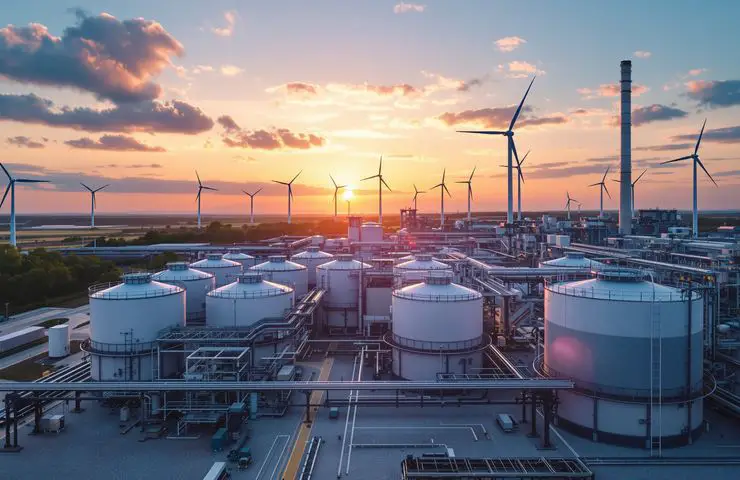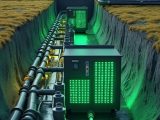
Japan awards $20bn clean hydrogen subsidies for green steel and clean ammonia
October 28, 2025Japan’s government has rolled out the first winners of its ambitious ¥3 trillion (~$20 billion) hydrogen production subsidy program. Wrapped in a Contracts for Difference (CfD) scheme, these initial projects center on green steel and clean ammonia, signaling a major push for industrial decarbonization and underlining Japan’s bid to become a global hydrogen infrastructure powerhouse. Spread over 15 years, the fund is all about closing the cost gap between renewable hydrogen and old-school fossil options, giving this emerging market a serious vote of confidence.
Strategic Implications
This isn’t just another subsidy—it’s a strategic lever to:
- Turbocharge industrial decarbonization in sectors like steel and chemicals that are notoriously hard to clean up.
- Beef up energy security by cutting reliance on imported fossil fuels.
- Attract private investors with guaranteed price stability through those trusty CfD top-ups.
- Kick-start domestic green hydrogen and clean ammonia production, with each project delivering at least 1,000 tons of hydrogen equivalent annually.
- Secure Japan’s spot as a key hydrogen production and import hub for Northeast Asia.
- Send a long-term commitment message via the Hydrogen Society Promotion Act and GX Economic Transition Bonds.
How the CfD Scheme Works
Here’s the lowdown on the Contracts for Difference (CfD) model: when market prices for clean hydrogen climb above a set reference (usually tied to global LNG or coal rates), producers pocket a “top-up” subsidy. If prices dip below that benchmark, they pay back the difference. It’s a clever way to smooth out price swings and make bankability much easier. The scheme is managed by JOGMEC and overseen by METI, which only greenlights bids hitting strict carbon intensity targets (≤3.4 kg CO₂/kg H₂) and delivering genuine lifecycle emission cuts. Each year, METI tweaks the reference prices to mirror global carbon costs and LNG market shifts.
Evolution of Japan’s Hydrogen Strategy
Japan’s hydrogen journey began with its Basic Hydrogen Strategy in 2017, but the real momentum kicked in after the Fukushima crisis. Remember the pilot hydrogen refueling stations at the 2020 Tokyo Olympics and those prototype fuel-cell vehicles? They proved the concept but didn’t scale. Those early demos highlighted gaps in supply chains and financing, paving the way for this CfD approach. By May 2024, the Hydrogen Society Promotion Act and GX Economic Transition Bonds shifted the focus from small-scale trials to big-league commercialization.
Implementation and Oversight
The program runs on a two-tier framework: METI evaluates 27 bids from domestic giants and international players, while JOGMEC handles the price-gap top-ups and infrastructure grants. Each approved project must deliver at least 1,000 tons of hydrogen equivalent a year, ensuring real scale in Japan’s industrial hot spots.
Funding Structure and Timeline
It’s a ¥3 trillion pot spread over 15 years, with annual payouts tied to market conditions and updated reference prices. Subsidies are capped per kilogram of hydrogen to keep the budget in check. Although exact figures for the first-round winners aren’t public yet, insiders expect support in the ballpark of $1.5–$2/kg H₂. Award announcements are slated for Q1 2026, with a second bidding round planned for mid-2026.
Parallel Global Trends
Japan’s not alone in banking on CfDs. Europe and the UK have slashed offshore wind costs by over 50% in seven years through similar schemes. The EU’s Clean Hydrogen Alliance is also pushing public-private partnerships. But Japan’s twist is its laser focus on industrial decarbonization mandates.
Private Sector Engagement
Major steelmakers, chemical giants, and utilities are lining up for offtake deals, seeing these CfD-backed subsidies as a path to secure long-term hydrogen supply. Suppliers from Australia to the Middle East are exploring joint ventures, and banks are updating their risk models to reflect lower financing costs. By 2030, the sector could generate around 10,000 new jobs in electrolyzer manufacturing, construction, and operations.
Expert Perspective
“Japan’s savvy move to adapt a tried-and-true financial tool from renewables for green hydrogen really de-risks those massive upfront costs,” says Dr. Aya Nakamura, energy economist at University of Tokyo. “If they nail the execution, electrolyzer costs could tumble by 40–50% by 2030—just like solar PV. We could see regional hubs sprout around steel and ammonia plants, sharing infrastructure and R&D resources.”
Challenges and Outlook
It’s not all smooth sailing. Japan still needs to pin down how to verify lifecycle emissions for imported hydrogen, align regulations with international certification standards, and build out transport and storage networks. Tying reference prices to fossil fuel benchmarks could also stir up market distortions. Even so, these CfD awards feel like a true turning point for industrial decarbonization in Japan. All eyes are on the next evaluation phase in early 2026—if it goes well, Japan could well blaze the trail to a net-zero hydrogen economy by 2050.


 With over 15 years of reporting hydrogen news, we are your premier source for the latest updates and insights in hydrogen and renewable energy.
With over 15 years of reporting hydrogen news, we are your premier source for the latest updates and insights in hydrogen and renewable energy.